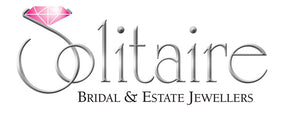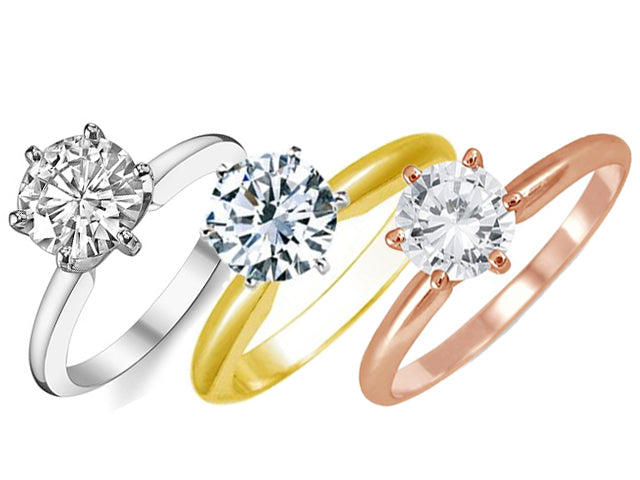Guide to Precious Metals
Precious Metals Defined
A precious metal is a rare, naturally occurring metallic chemical element of high economic value. Chemically, the precious metals tend to be less reactive than most elements. They are usually pliable and have a high luster.Historically, precious metals were important as currency but are now regarded mainly as investment and industrial commodities. Gold, silver, platinum, and palladium each have an ISO 4217 currency code. The best-known precious metals are the coinage metals, gold and silver. While both have industrial uses, they are better known for their uses in art, jewelry and coinage.

Gold
24 Karat gold is a dense, malleable precious metal that is bright yellow in color and can be polished to a high luster. In its pure form it is considered too soft and not suitable to use in jewelry. Gold is commonly mixed with other metals, or alloys, to create a wide range of color variations and working properties. White gold is a silvery-looking gold alloy that contains gold mixed with palladium, nickel, or sometimes zinc to achieve its color. White gold has yellow undertones and is commonly rhodium-plated to create a whiter appearance. The plating will eventually wear away at which time it can be replated. White Gold is a super white alloy that does not require rhodium-plating.- 24 Karat gold fine (99.7% gold).
- 18 Karat gold is 18 parts gold or 75% pure gold content, which may be marked as 750.
- 14 Karat gold is 14 parts gold or 58% pure gold content, which may be marked as 585.
- 10 Karat gold is 10 parts gold or 41% pure gold content.
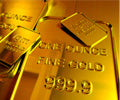
Platinum
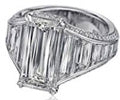
Silver
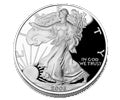
Contemporary Metals & Materials
A variety of metal alternatives offer lower cost options for use in jewelry, especially for mens bands. Rings created from contemporary metals cannot be sized. Follows is a list of popular contemporary metals & materials and their properties.|
Metal |
Color |
Finish |
Properties |
Illustration |
|
Titanium |
Gray |
Will show signs of wear, but can be polished |
Lightweight, shatterproof |
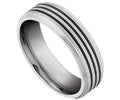 |
|
Dura Cobalt® |
White |
Will show signs of wear, but can be polished |
Shatterproof, bio-friendly, This durable metal stays white without re-plating and is sizeable to ¼ size. |
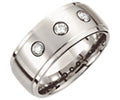 |
|
Dura Tungsten® |
Gray |
Will remain polished with no maintenance |
Heavy, substantial feel, can fracture or break |
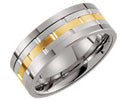 |
|
Ceramic |
Black, White, Pink (throughout) |
Maintains its finish |
Can break, hi-tech aerospace material. This permanently polished jewelry is lightweight, colorfast, and heat resistant. |
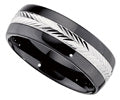 |
|
Stainless Steel |
Grayish White |
Can be machined or cast. Will show signs of wear but can be polished |
Shatterproof, also known as surgical steel. This is the highest grade given |
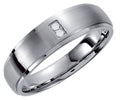 |
The Colors of Metal for Jewelry
References
- Precious Metal, Wikipedia, http://en.wikipedia.org/wiki/Precious_metal
- Jewelry Metal Types, The Basics of Jewelry by Stuller 2012
